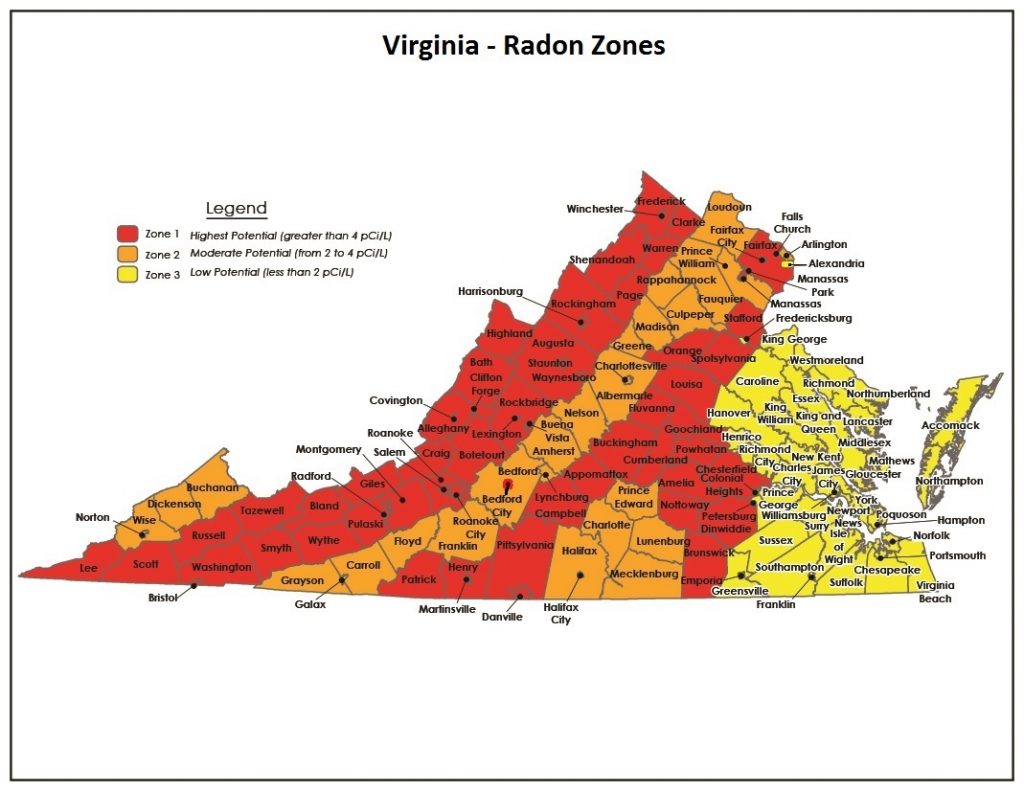
DISCLAIMER:
EPA produced a national radon risk map in 1994. The Virginia map shown above was part of this effort. The map was based on a very limited number of radon test results, existing knowledge of surface geological features/layers and measurements of background radiation. EPA currently has no plans to revise this map. This map was never intended to be used for predictive purposes, but only to provide a rough estimate of the chances of encountering high indoor radon levels in a particular jurisdiction.
The only way to know if a particular home has a radon problem is to test for it. EPA & VDH recommend that all homes be tested for radon – especially those being purchased.
Generally in Virginia, the closer you get to the ocean the lower the odds of encountering high radon levels, but this is not a guarantee that high radon levels will never be found in these areas. High radon test results have been found in every Virginia County – including all of those designated as “low risk”. High radon levels in these areas may result when homes are built over small Uranium deposits, non-native fill material or when the foundation is cut into valleys or hillsides where they may encounter deeper geologic layers that are high in radon source material.
KNOWN INACCURACIES ON THE EPA VIRGINIA RISK MAP:
The conclusions below are based on additional radon test results accumulated by VDH since 1994:
- Loudoun County should be designated as high risk – not moderate.
- The “low risk” counties along the I-95 corridor that border high risk jurisdictions to their west (ex. Henrico, Hanover, Richmond City, Caroline, King George) should be designated as moderate risk.
- Many homes built in the Williamsburg area at low elevations and/or cut into river valleys have shown high radon test results. See this article for more details: William & Mary radon study
